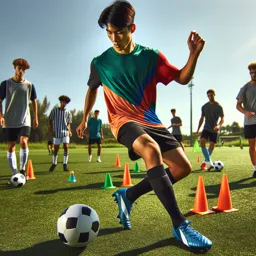Rhythmic gymnastics is a captivating sport that blends dance, gymnastics, and the creative manipulation of handheld apparatus. Unlike traditional artistic gymnastics, rhythmic gymnastics is performed exclusively by women and emphasizes grace, flexibility, and coordination—all set to music.
History and Development
The sport originated in the 20th century, evolving from various dance styles and physical education theories in Europe. Officially recognized by the Fédération Internationale de Gymnastique (FIG) in the early 1960s, rhythmic gymnastics has steadily grown in popularity and is now a highlight in international competitions, including the Olympic Games.
Main Apparatus
- Ribbon: A long, colorful band attached to a stick, creating intricate patterns and flicks.
- Hoop: Used for rolling, spinning, and leaping through, showcasing strength and flexibility.
- Ball: Typically made of rubber, kept in constant motion with the hands or body.
- Clubs: Small batons tossed and caught in coordinated, complex patterns.
- Rope: Skipped, swung, or thrown, adding dynamic movement, mostly in junior or group routines.
Skills and Training
Rhythmic gymnasts undergo extensive training to develop flexibility, balance, strength, and musical interpretation. Their routines choreograph synchronized body movements and apparatus handling, blending athleticism with artistic creativity. Many gymnasts begin training young to build a solid foundation in dance and movement.
Competition and Scoring
Competitions are held individually and in teams, with judges evaluating execution, artistry, difficulty, and apparatus mastery. Creativity, precise synchronization, and flawless apparatus handling are crucial for earning high scores in both technical skill and artistic impression.
Benefits of Rhythmic Gymnastics
Beyond competition, the sport promotes improved posture, increased flexibility, enhanced coordination, and a strong sense of rhythm. It also cultivates discipline, self-confidence, and a passion for expressive movement.
Getting Started
Interested beginners can join local clubs or take introductory classes with experienced coaches. Comfortable attire and enthusiasm for dance and movement are all that’s needed to start. Rhythmic gymnastics offers a unique fusion of athleticism and artistry that continues to inspire worldwide.

































